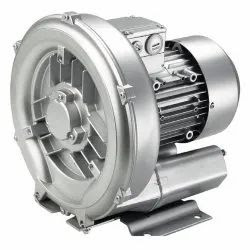Why is the rotary lobe blower called a “Roots Blower”?
Learn What a Roots Blower is
Why is the rotary lobe blower called a “Roots Blower”?
The positive rotary lobe blower was designed in the 1850s by the Francis and Philander Roots brothers. It was later patented in 1860 by the brothers and the Roots name became the name of the design.
What is the basic principle of a “Roots Blower”?
The roots blower’s principle consists of the following: the process starts with air flowing from the inlet port into the element chamber. The timed rotation of the rotors against the wall of the chamber creates a so-called “air flow direction”. At this point, there is still atmospheric pressure in these chambers.
As soon as the first lobe passes the opening to the pressure side, the system pressure is adjusted. This is called isochoric compression. The rotors seal each other off to the inside, which prevents a change of pressure.
How does a “Roots Blower” operate?
A Roots blower operates using the isochoric compression principle, also known as external compression. The pressure increase is achieved by intermittently transporting a gaseous medium (e.g. atmospheric air) into a system.
By forcing the medium from atmospheric conditions into a system with a given resistance (e.g. a water column, distribution network), the relevant pressure increase is achieved. The roots blower will operate at a controlled output level to overcome this resistance.
Special gas roots blower – Roots Rotary Lobe PD Blowers – Roots Universal RAI (URAI) – Supporting industrial processes with reliable, efficient air and gas blowers – What is the pressure of a condensate pump? – What type of pump is a condensate pump? – Why is the rotary lobe blower called a “Roots Blower”? – What is the life of a blower? – What are the disadvantages of blower? – What is the difference between a rotary blower and a root blower? – What is the difference between Roots blower and vacuum pump?
